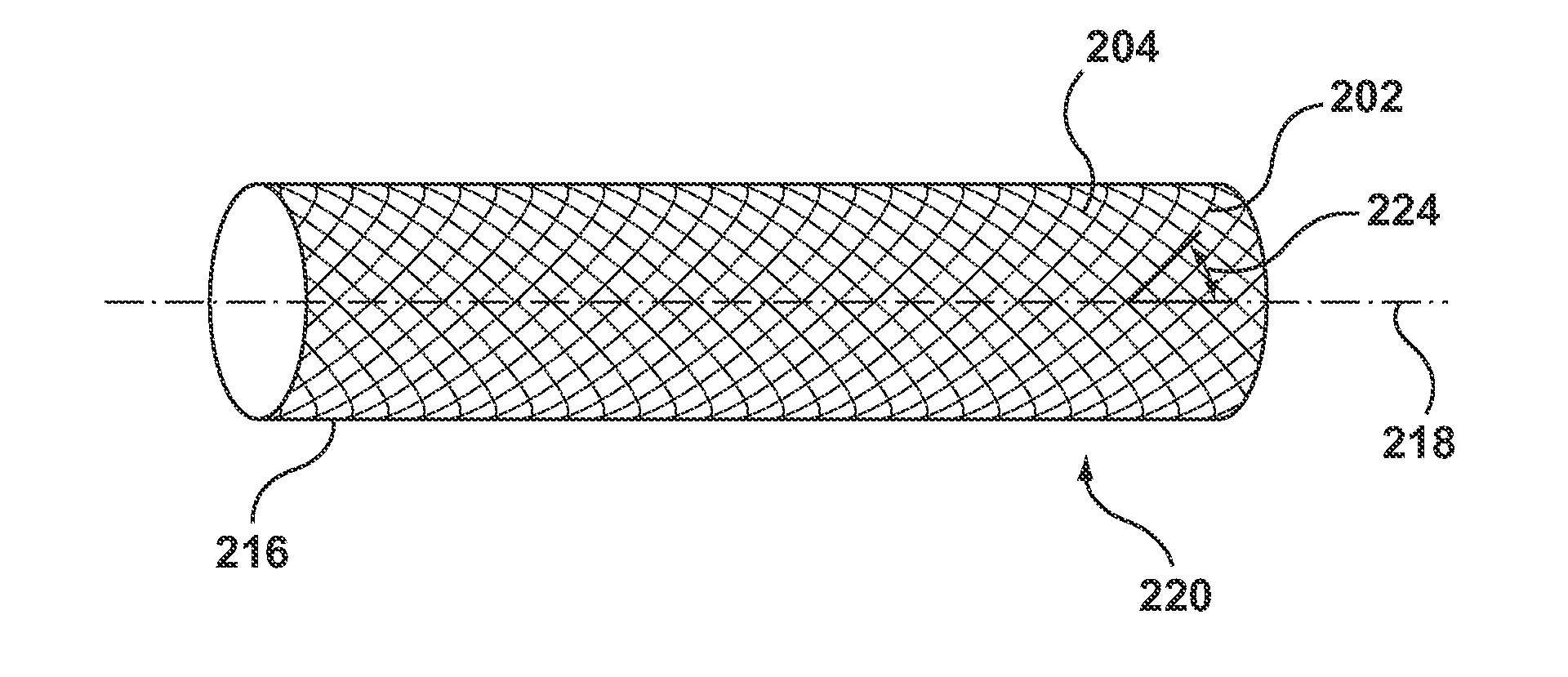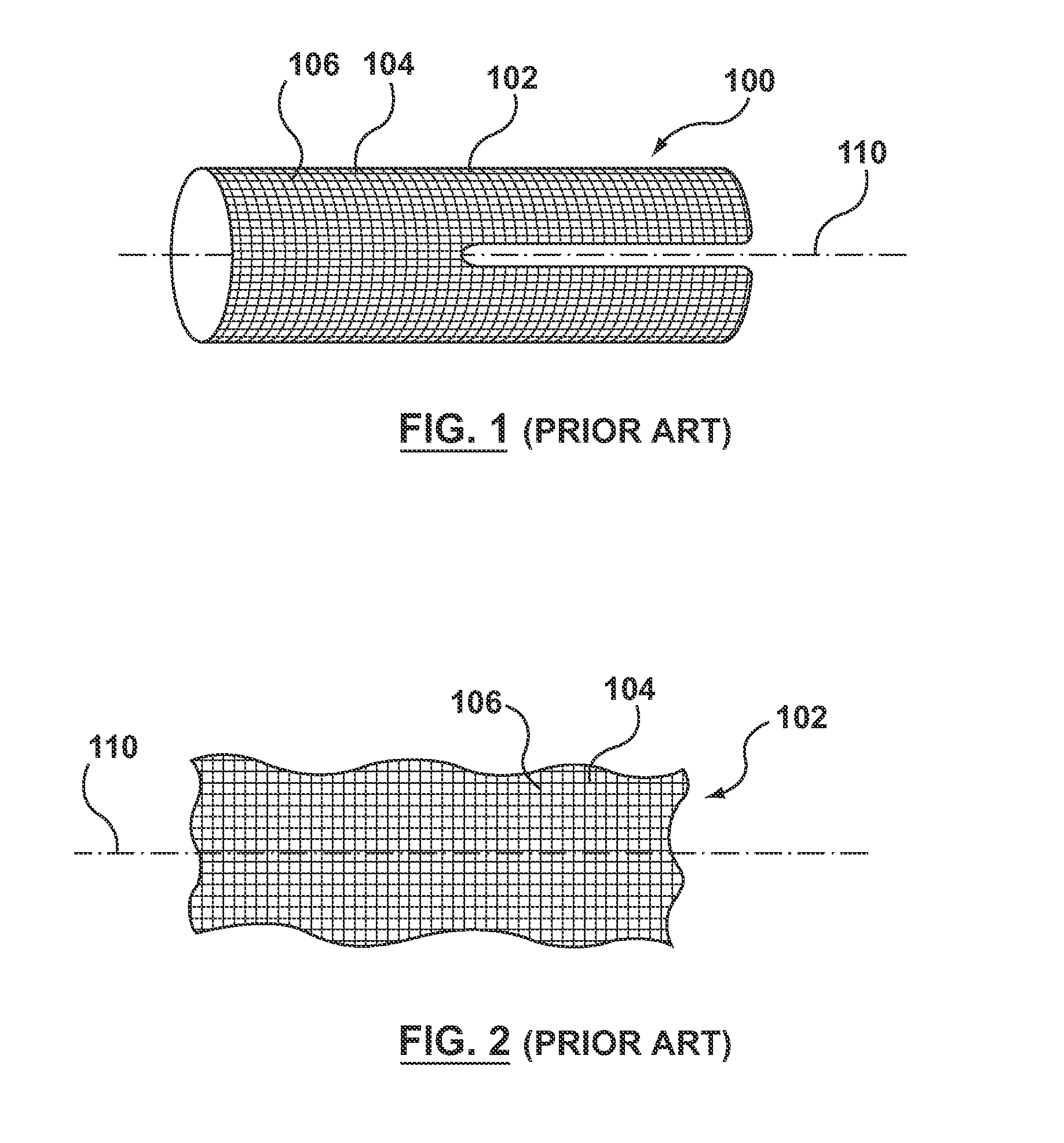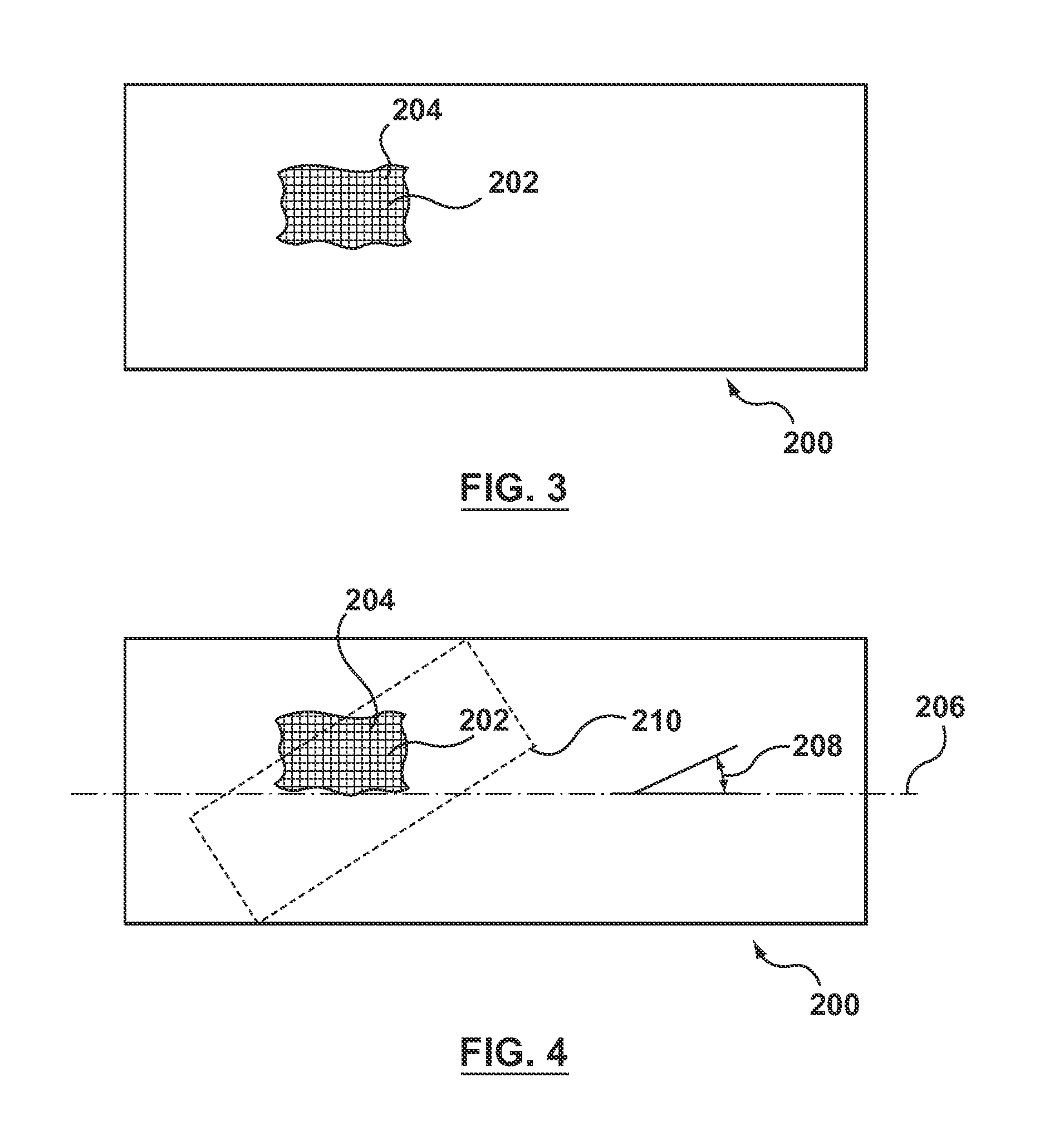Method of Making an Endoluminal Vascular Prosthesis
- Summary
- Abstract
- Description
- Claims
- Application Information
AI Technical Summary
Benefits of technology
Problems solved by technology
Method used
Image
Examples
Embodiment Construction
[0017]With reference to the accompanying figures, wherein like components are labeled with like numerals throughout the figures, illustrative graft materials for endoluminal prostheses, and methods for making endoluminal prostheses are disclosed.
[0018]Referring now to the FIGS. 3-6, wherein components are labeled with like numerals throughout the several figures, an embodiment of a method of making a an endoluminal prosthesis 220 including a graft material 210 with warp yarns 202 disposed at an angle relative to a longitudinal axis 218 of the prosthesis 220 is disclosed. In particular, as shown in FIG. 3, a woven sheet of material 200 is utilized. Woven sheet of material 200 may be made from yarns made from biocompatible materials known to those skilled in the art as suitable for use in an endoluminal prosthesis, including but not limited to yarns made from polyester, polytetrafluoroethylene (PTFE), polypropylene, stainless steel, or nitinol. Woven sheet of material 200 consists of ...
PUM
| Property | Measurement | Unit |
|---|---|---|
| Angle | aaaaa | aaaaa |
| Angle | aaaaa | aaaaa |
| Angle | aaaaa | aaaaa |
Abstract
Description
Claims
Application Information
 Login to View More
Login to View More - R&D
- Intellectual Property
- Life Sciences
- Materials
- Tech Scout
- Unparalleled Data Quality
- Higher Quality Content
- 60% Fewer Hallucinations
Browse by: Latest US Patents, China's latest patents, Technical Efficacy Thesaurus, Application Domain, Technology Topic, Popular Technical Reports.
© 2025 PatSnap. All rights reserved.Legal|Privacy policy|Modern Slavery Act Transparency Statement|Sitemap|About US| Contact US: help@patsnap.com



